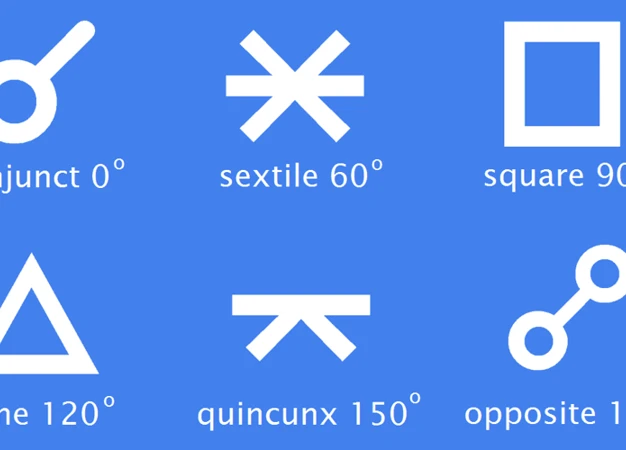Astrology is a captivating and complex field, filled with various aspects that provide insight into the intricate dynamics of human behavior and relationships. One particular aspect that sparks intrigue is the inconjunct aspect. This enigmatic celestial occurrence brings forth hidden tension, invites transformation and growth, and adds complexity to interpersonal connections. Understanding the influence and interpretation of inconjunct aspects requires delving into the signs, planets, and houses involved, as well as considering orbs and the overall strength of the aspect. By exploring research and case studies, we can gain a deeper understanding of this perplexing aspect and navigate its effects with self-awareness, communication, and a willingness to embrace personal growth. Join us as we unravel the enigmatic nature of inconjunct aspects and uncover their fascinating role in astrology.
Contents
- Understanding Inconjunct Aspects
- The Influence of Inconjunct Aspects
- Interpreting Inconjunct Aspects
- Research and Case Studies
- Tips for Navigating Inconjunct Aspects
- Conclusion
-
Frequently Asked Questions
- Why are inconjunct aspects important in astrology?
- What challenges come with interpreting inconjunct aspects?
- How do inconjunct aspects reveal hidden tension?
- What role does transformation and growth play in inconjunct aspects?
- How do inconjunct aspects add complexity to relationships?
- What factors should be considered when interpreting inconjunct aspects?
- Can the orb of an inconjunct aspect affect its influence?
- How can a person navigate the challenges of inconjunct aspects?
- Can inconjunct aspects offer positive outcomes?
- References
-
Frequently Asked Questions
- 1. How are inconjunct aspects different from other astrological aspects?
- 2. What signs and elements are commonly associated with inconjunct aspects?
- 3. How do inconjunct aspects reveal hidden tension?
- 4. Can inconjunct aspects lead to transformation and growth?
- 5. Do inconjunct aspects affect relationships?
- 6. How do planets involved in an inconjunct aspect influence its dynamics?
- 7. What is the significance of house placements in interpreting inconjunct aspects?
- 8. What is the importance of orbs and strength in understanding inconjunct aspects?
- 9. Are there any notable research or case studies on inconjunct aspects?
- 10. How can individuals navigate inconjunct aspects for personal growth?
- References
- Read More
Understanding Inconjunct Aspects
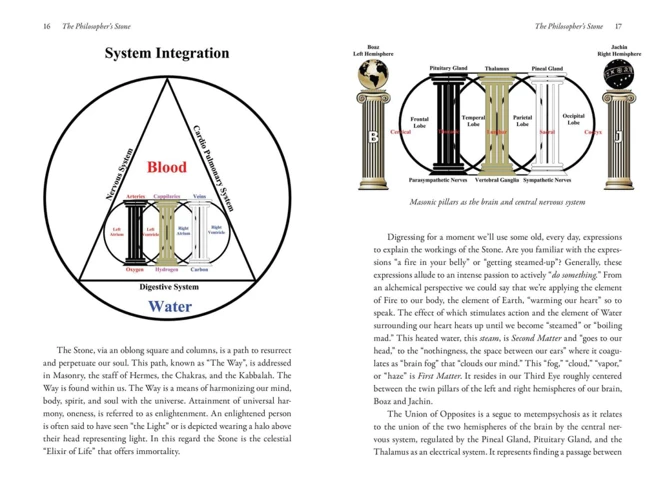
To truly grasp the intriguing dynamics of inconjunct aspects in astrology, it is crucial to understand their essence and significance. Inconjunct aspects, also known as quincunx aspects, arise when two planets sit approximately 150 degrees apart, forming a challenging angle that defies easy integration. These celestial encounters manifest hidden tension, which may initially perplex individuals. However, this aspect holds immense importance in astrology as it acts as a catalyst for transformation and growth in one’s personal journey. Interpreting inconjunct aspects can be challenging due to the complexities they present, but by analyzing the signs, elements, and planets involved, as well as considering house placements and the strength of the aspect, astrologers can unravel the enigmatic nature of these aspects and unveil the secrets they hold within.
What are inconjunct aspects?
Inconjunct aspects, also known as quincunx aspects in astrology, occur when two planets are approximately 150 degrees apart. This creates an angle that is seen as challenging and intricate. Unlike other aspects that create harmonious connections, inconjunct aspects bring forth a sense of perplexity and tension. The planets involved in the inconjunct aspect do not share the same element or modality, which adds to the complexity. For example, a Venus inconjunct Pluto may signify difficulties in balancing love and power, while a Mars inconjunct Neptune could indicate confusion and lack of direction in asserting oneself. These aspects demand careful analysis and interpretation, as they reveal contrasting energies that require integration and growth. Understanding the nature of inconjunct aspects is essential for astrologers and enthusiasts alike, as it unveils the intricacies of human behavior and relationships in the zodiac.
Importance of inconjunct aspects
The importance of inconjunct aspects in astrology cannot be understated. These celestial encounters bring to light the hidden tension that exists within us, urging us to confront and address the areas of our lives where growth and transformation are needed. Inconjunct aspects act as catalysts for change, pushing us out of our comfort zones and into a realm of self-discovery. Through their challenging nature, these aspects invite us to confront our fears, limitations, and areas of imbalance, ultimately guiding us towards personal development and a greater understanding of ourselves. They provide valuable opportunities for introspection, self-reflection, and self-improvement. By embracing the lessons and growth potential that inconjunct aspects offer, we can embark on a journey of self-realization and become more aligned with our true purpose and authentic selves. So, while the complexities of inconjunct aspects may initially pose interpretation challenges, their importance lies in their ability to propel us forward on our path of personal evolution and growth.
Interpretation challenges
Interpreting inconjunct aspects in astrology presents its fair share of challenges. The intricate nature of these aspects can be perplexing, as they bring together planets that operate in completely different modes and energies. The quincunx angle, measuring approximately 150 degrees, creates a discordant energy that requires careful analysis and synthesis. One of the main interpretation challenges lies in understanding the inherent tension between the planets involved. Each planet may have conflicting desires, motives, and modes of expression, which can lead to a sense of internal friction. Another challenge arises from the difficulty in finding common ground and integration between the energies represented by the planets. This can cause a sense of unease and a need for adjustment and realignment in various areas of life. Additionally, inconjunct aspects often require a deeper dive into the signs and elements involved to understand the conflicts and paradoxes that arise. While these challenges add complexity to the interpretation process, they offer valuable insights into our personal struggles and areas of growth. Capricorn, with its determined and practical nature, can serve as a powerful anchor in navigating these interpretation challenges, providing stability and perseverance in understanding the complexities of inconjunct aspects.
The Influence of Inconjunct Aspects

Inconjunct aspects wield a profound influence on various aspects of life, revealing hidden tensions and presenting opportunities for transformation and personal growth. These celestial encounters often bring forth complex dynamics in relationships, as individuals navigate the intricate web of emotions and energies. The influence of inconjunct aspects can be likened to a puzzle, where pieces that don’t easily fit together force individuals to adapt and find innovative solutions. It is through these challenges that individuals are propelled towards self-discovery, as they delve deep into their own psyche to understand and integrate the energies at play. Navigating the influence of inconjunct aspects requires open communication, understanding, and a willingness to embrace the potential for growth. Through this intricate dance between planets and signs, individuals can unlock a richer understanding of themselves and their relationships, ultimately leading to a deeper sense of fulfillment and connection.
Revealing hidden tension is a key characteristic of inconjunct aspects in astrology. When two planets form an inconjunct aspect, they create a challenging angle that often brings underlying conflict and unease to the surface. This hidden tension can manifest in various areas of life, such as relationships, career, or personal development. The inconjunct aspect acts as a mirror, reflecting the areas where we may be experiencing internal discord or resistance. It draws our attention to the aspects of ourselves that need to be acknowledged and addressed in order to achieve harmony and growth. This unveiling of hidden tension can initially be perplexing and disorienting, as it confronts us with the realities we often attempt to suppress or ignore. However, it presents an opportunity for self-reflection and transformation. By embracing the discomfort and delving into the depths of our psyche, we can navigate through the hidden tension and emerge with a greater sense of wholeness and understanding of ourselves.
Transformation and growth
Transformation and growth are central themes when it comes to understanding inconjunct aspects in astrology. These celestial encounters, marked by a challenging angle of approximately 150 degrees, act as catalysts for personal evolution. Inconjunct aspects bring hidden tensions to the surface, forcing individuals to confront and address areas of their lives that may be stagnant or in need of change. This aspect operates as a potent teacher, urging individuals to step out of their comfort zones in order to grow and transform. It demands adaptability, flexibility, and an openness to new perspectives and experiences. Embracing the transformative energy of inconjunct aspects allows individuals to break free from old patterns, beliefs, and behaviors that no longer serve their highest good. It encourages personal development by presenting opportunities for self-reflection, introspection, and a deeper understanding of one’s true desires and authentic self. Navigating the challenging terrain of transformation and growth requires courage, resilience, and an unwavering commitment to personal evolution. It is through embracing these qualities that individuals can emerge from the crucible of inconjunct aspects with a renewed sense of self and a greater capacity for fulfillment in all areas of life.
Complexity in relationships
Complexity in relationships is a significant aspect of inconjunct aspects in astrology. These celestial encounters introduce intricate dynamics that can pose challenges to individuals involved in partnerships or friendships. The inconjunct aspect often brings a sense of tension and imbalance, creating a push-pull dynamic within relationships. This can manifest as a struggle to find common ground, difficulty understanding each other’s perspectives, or feeling like there is a constant need for adjustments or compromises. The planetary energies involved in the inconjunct aspects play a crucial role in shaping the complexities of relationships. For example, an inconjunct aspect between Venus and Mars may bring conflicts regarding desires, values, or the way love and passion are expressed. Similarly, an inconjunct aspect involving the Moon and Saturn may signify challenges in emotional intimacy and a need for finding stability and security within the relationship. Understanding these complexities and embracing open communication, empathy, and a willingness to work through challenges is key to navigating and thriving in relationships influenced by inconjunct aspects. It is important to remember that this aspect does not necessarily indicate doom or negativity in relationships, but rather a call for awareness, growth, and mutual understanding.
Interpreting Inconjunct Aspects
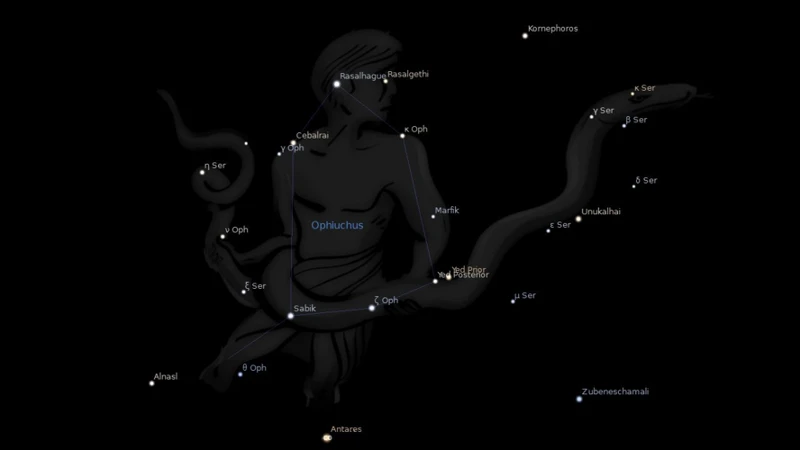
Unlocking the true meaning of inconjunct aspects in astrology requires a deep dive into their interpretation. When analyzing these celestial encounters, it is essential to consider various factors. The signs and elements involved provide valuable insights into the energies at play, highlighting the inherent tensions and challenges. Additionally, understanding the specific planets involved allows for a more nuanced understanding of the dynamics at hand. Examining the house placements of these planets further refines the interpretation, shedding light on the specific areas of life affected by the inconjunct aspect. It is also essential to take into account the orbs and strength of the aspect, as this determines the intensity and influence of the celestial interaction. By piecing together these intricate elements, astrologers can navigate the complexities of inconjunct aspects and decipher their perplexing messages with precision and depth.
The signs and elements
In the realm of astrology, the signs and elements play a pivotal role in understanding the dynamics of inconjunct aspects. Each zodiac sign is associated with a specific element, which adds depth and nuance to the interpretation of these aspects. For instance, fire signs (Aries, Leo, Sagittarius) symbolize passion, inspiration, and action, infusing inconjunct aspects with a sense of urgency and a need for individual expression. Earth signs (Taurus, Virgo, Capricorn) bring practicality, stability, and groundedness, which may manifest as a desire for practical solutions and tangible outcomes when dealing with inconjunct aspects. Air signs (Gemini, Libra, Aquarius) introduce intellect, communication, and social interaction, fostering a need for open dialogue and intellectual exploration when navigating these aspects. Finally, water signs (Cancer, Scorpio, Pisces) add emotional depth, intuition, and sensitivity to the equation, which can heighten the emotional impact and transformative potential of inconjunct aspects. By considering the signs and elements involved in an inconjunct aspect, astrologers can gain a deeper understanding of the unique energies at play and provide insightful interpretations for individuals seeking guidance on their astrological journey.
The planets involved
When it comes to understanding inconjunct aspects, the planets involved play a crucial role in shaping the dynamics and influences at play. Each planet represents different energies and characteristics, which intersect in unique ways when they form an inconjunct aspect. Here is a breakdown of the planets commonly involved in inconjunct aspects and their corresponding impacts:
1. Sun: The Sun represents one’s core identity and ego. In an inconjunct aspect, the Sun can signify clashes between personal desires, ambitions, and external circumstances. This can lead to a sense of internal tension and the need to navigate conflicting aspects of self-expression.
2. Moon: The Moon reflects one’s emotions, instincts, and subconscious mind. Inconjunct aspects involving the Moon often bring about internal emotional conflicts and challenges in finding emotional balance and security. Individuals may struggle to align their emotional needs with external circumstances or relationships.
3. Mercury: Mercury symbolizes communication, logic, and intellect. Inconjunctions with Mercury may manifest as difficulties in expressing oneself clearly or misunderstandings in communication. It can also indicate a clash between one’s thinking patterns and the demands of everyday life.
4. Venus: Venus represents love, beauty, and harmony. Inconjunct aspects involving Venus may involve struggles in relationships, as there can be a mismatch between personal values, desires, and the expectations of others. It can also indicate challenges in finding balance between self-love and the need for harmonious connections.
5. Mars: Mars embodies action, passion, and assertion. Inconjunctions with Mars may manifest as challenges in asserting oneself or finding the right outlets for one’s energy. It can signify internal conflicts between one’s drive for independence and the need to cooperate with others.
6. Jupiter: Jupiter represents growth, expansion, and opportunity. Inconjunctions with Jupiter may bring about conflicts between personal beliefs, ideals, and the opportunities that present themselves. Individuals may need to navigate the tension between taking risks and staying within their comfort zones.
7. Saturn: Saturn symbolizes responsibility, discipline, and structure. Inconjunctions with Saturn often highlight conflicts between personal limitations, fears, and societal expectations. Individuals may experience obstacles and challenges that push them to reassess their goals and responsibilities.
Understanding the unique influences of each planet involved in the inconjunct aspect can provide valuable insights into the challenges individuals may face in specific areas of their lives. By recognizing and working with these energies, individuals can navigate these tensions with awareness and find opportunities for growth and transformation.
House placements
House placements play a vital role in interpreting inconjunct aspects and shedding light on their intricate dynamics. Each house in the astrological chart represents different areas of life, and the specific house placement of the planets involved in the inconjunct aspect offers valuable insights into the manifestation of tension and growth potential. By examining the house placements, we can gain a clearer understanding of how the challenges and transformations brought forth by the inconjunct aspect are likely to manifest in specific areas of life. For example, if the inconjunct aspect falls within the 1st and 6th houses, it may indicate tension between self-identity and daily routine or work-related matters. Conversely, an inconjunct aspect between the 7th and 12th houses could suggest complexities and transformations in partnerships or spirituality. It is essential to analyze the interaction between the planets and houses involved in the inconjunct aspect to discern the specific areas of life that are most affected and to uncover the unique opportunities for growth and integration.
Orbs and strength
In the realm of astrology, orbs and strength play a vital role in understanding the significance and impact of inconjunct aspects. Orbs refer to the allowable range of degrees within which a planetary aspect is considered effective. While there is no definitive consensus on the exact orbs for inconjunct aspects, a general guideline suggests that an orb of around 2 to 3 degrees before and after the exact aspect is acceptable. However, some astrologers may choose to use a tighter or wider orb based on personal preference or specific techniques employed.
Examining the strength of an inconjunct aspect involves several factors. Firstly, the strength of the planets involved comes into play. Planets positioned in their own signs or in exaltation are considered stronger, while those in detriment or fall may weaken the aspect. Additionally, the dignity of the ruling planets or any mutual receptions can influence the strength. The house placement of the planets, particularly if it aligns with their natural rulership, can amplify or diminish the impact of the inconjunct aspect.
It is essential to consider the overall emphasis on the particular planets and aspects within the birth chart. Are there multiple aspects involving the same planets or a stellium in the related signs? Such factors can indicate a heightened potency of the inconjunct aspect and emphasize its effects in the individual’s life.
By analyzing the orbs and strength, astrologers gain a deeper understanding of the subtleties and nuances of inconjunct aspects. This knowledge helps them paint a more accurate and comprehensive picture of the influence these aspects hold within an individual’s astrological makeup.
Research and Case Studies
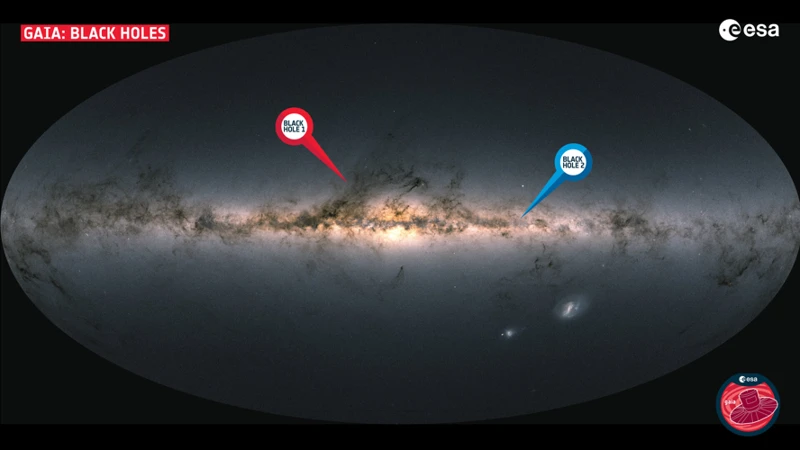
Research and case studies play a pivotal role in understanding the intricate dynamics of inconjunct aspects in astrology. Through careful analysis of real-life examples, astrologers can gain deeper insights into the unique manifestations and effects of these aspects. Case studies provide invaluable observations that shed light on the complexities and nuances of inconjunct aspects in various areas of life, including relationships, career, and personal development. These studies allow astrologers to examine the specific planetary placements, house positions, and overall astrological configurations that contribute to the dynamics of inconjunct aspects. With the help of research and case studies, astrologers can refine their interpretation skills and develop a more comprehensive understanding of how inconjunct aspects influence individuals and shape their experiences. These studies contribute to the collective knowledge of astrology, enabling astrologers to continually refine their techniques and deepen their understanding of this fascinating aspect. The ongoing research and analysis of case studies are vital for the advancement of astrological knowledge and the ability to provide accurate and meaningful guidance to those seeking insights into inconjunct aspects.
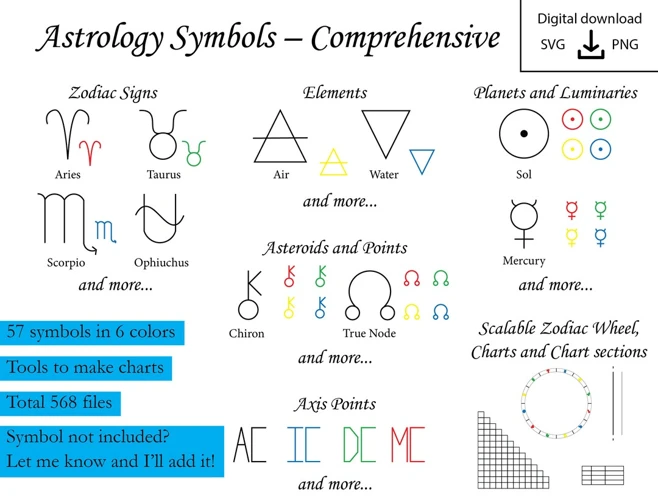
Navigating the intricate dynamics of inconjunct aspects requires a mindful approach and a willingness to embrace personal growth. To effectively navigate these challenging aspects, self-awareness and integration are key. Understanding your own strengths and weaknesses, as well as recognizing how the inconjunct aspect influences your behavior and relationships, allows for greater self-reflection and self-improvement. Additionally, open and honest communication is vital in navigating inconjunct aspects. Clearly expressing your thoughts, feelings, and needs, while actively listening to others, fosters understanding and empathy in relationships. Embracing the growth potential presented by inconjunct aspects is essential. Instead of perceiving them as hurdles or obstacles, view them as opportunities for transformation and personal evolution. By embracing the challenges and lessons offered by inconjunct aspects, individuals can navigate their celestial influence with confidence and grace.
Self-awareness and integration
Self-awareness and integration play a vital role in navigating inconjunct aspects and harnessing their transformative power. While these aspects may initially bring forth tension and challenges, they also serve as opportunities for personal growth and development. Developing self-awareness allows individuals to recognize and acknowledge the areas of their lives where inconjunct aspects are at play. This heightened self-awareness creates a foundation for embracing the dynamic energy of these aspects and understanding their influence on relationships, career paths, and personal endeavors.
Integration is another key aspect when dealing with inconjunct energies. It involves finding ways to harmonize the seemingly contrasting energies of the planets involved in the aspect. This can be achieved through self-reflection, introspection, and gaining a deeper understanding of both sides of the inconjunct equation. By finding a balance between the energies represented by the planets, individuals can channel the power of these aspects towards personal growth and transformation.
Practical techniques such as meditation, mindfulness, and self-reflection can aid in developing self-awareness and fostering integration. These practices allow individuals to observe their thoughts, emotions, and behaviors without judgment, enabling a deeper understanding of the underlying dynamics at play. Journaling and therapy can also support the process of self-awareness and integration by providing a space for introspection and self-expression.
Seeking support from a knowledgeable astrologer or counselor can provide valuable insights into navigating inconjunct aspects. Their expertise can shed light on the specific challenges and opportunities presented by these aspects and help individuals develop strategies for embracing growth and transformation.
By cultivating self-awareness and integrating the energies of inconjunct aspects, individuals can harness the power of these enigmatic celestial encounters and use them as catalysts for personal development, ultimately leading to a more fulfilling and authentic life journey.
Communication and understanding
Communication and understanding play a crucial role in navigating the complexities of inconjunct aspects in astrology. These aspects, characterized by their challenging angles, often create tension and misunderstandings in relationships. However, fostering open and honest communication becomes paramount in overcoming these hurdles. Individuals with inconjunct aspects should strive to express their thoughts and feelings clearly, using diplomatic and empathetic language to bridge the gaps that arise. Active listening is equally essential, as it allows for a deeper understanding of the perspectives and needs of others involved in the dynamic. Developing effective communication skills can aid in resolving conflicts and finding common ground, ultimately enhancing the overall harmony and growth potential within these intricate relationships. It is important to remember that communication is a two-way street, requiring both parties to actively participate and extend understanding to reach a place of mutual respect and acceptance.
Embracing the growth potential
Embracing the growth potential presented by inconjunct aspects is a transformative journey that requires openness and self-reflection. These aspects, although initially challenging, offer a unique opportunity for personal evolution and expansion. When confronted with the tensions and conflicts that inconjunct aspects bring, individuals have the chance to delve deep into their psyche, confront their fears and limitations, and ultimately emerge stronger and wiser. This growth potential lies in the ability to embrace the inherent discomfort and uncertainty that inconjunct aspects present. It calls for a shift in perspective, where challenges are viewed as valuable lessons and opportunities for growth rather than obstacles to be avoided. By acknowledging and accepting the inner work required, individuals can unlock their true potential and experience profound personal development. Embracing this growth potential involves self-awareness and a willingness to explore the depths of one’s emotions, beliefs, and patterns of behavior. It may involve seeking therapy, engaging in introspection, or pursuing spiritual practices that provide guidance and support. Ultimately, through self-reflection and a commitment to personal growth, individuals can harness the transformative power of inconjunct aspects and embark on a profound journey of self-discovery and empowerment.
Conclusion

In conclusion, delving into the intriguing dynamics of inconjunct aspects in astrology uncovers a realm of complexity and growth potential. These elusive celestial encounters reveal hidden tension within individuals and relationships, serving as catalysts for transformation and personal development. Although interpreting inconjunct aspects can be challenging, considering the signs, elements, planets, house placements, and the strength of the aspect provides valuable insights. By embracing self-awareness, effective communication, and a willingness to embrace growth, individuals can navigate the complexities of inconjunct aspects with grace and understanding. The research and case studies surrounding inconjunct aspects offer further validation and exploration of their effects, widening our knowledge and providing a foundation for insightful astrological analysis. As we continue to unlock the secrets and significance of inconjunct aspects, we gain a deeper understanding of the rich tapestry of human experience and the fascinating role astrology plays in illuminating our unique journeys.
Frequently Asked Questions

Why are inconjunct aspects important in astrology?
Inconjunct aspects are essential in astrology as they reveal hidden tension and invite growth and transformation. They provide valuable insights into the complexities of human behavior and relationships, offering opportunities for personal development.
What challenges come with interpreting inconjunct aspects?
Interpreting inconjunct aspects can be challenging due to their intricate nature. These aspects often create conflicting energies that are difficult to integrate, making it crucial to carefully analyze the signs, planets, and houses involved to understand their unique impact.
Inconjunct aspects highlight hidden tension by creating a sense of discomfort and unease between the energies of the planets involved. They signify areas in life where adjustments and integration are necessary for personal growth.
What role does transformation and growth play in inconjunct aspects?
Inconjunct aspects act as catalysts for transformation and growth. They challenge individuals to confront and overcome obstacles, encouraging personal evolution and self-development.
How do inconjunct aspects add complexity to relationships?
Inconjunct aspects in synastry, the study of relationship compatibility, can add layers of complexity to interpersonal dynamics. They bring forth contrasting energies and require open communication and understanding for harmony to be achieved.
What factors should be considered when interpreting inconjunct aspects?
When interpreting inconjunct aspects, it is important to analyze the signs and elements involved, the specific planets in question, their house placements, and the strength of the aspect. These factors provide valuable context and insights into the impact of the inconjunct aspect.
Can the orb of an inconjunct aspect affect its influence?
Yes, the orb of an inconjunct aspect can impact its influence. A tighter orb represents a stronger and more significant aspect, while a wider orb may indicate weaker or less prominent effects.
To navigate the challenges of inconjunct aspects, individuals should prioritize self-awareness and integration. Embracing the growth potential that inconjunct aspects offer, along with effective communication and a willingness to understand one another, can help foster harmony and personal development.
Can inconjunct aspects offer positive outcomes?
Absolutely! Inconjunct aspects, despite their challenging nature, hold immense potential for personal growth, transformation, and increased self-awareness. By embracing the lessons and opportunities they present, individuals can experience positive outcomes in various areas of life.
References
Frequently Asked Questions

1. How are inconjunct aspects different from other astrological aspects?
Inconjunct aspects, also known as quincunx aspects, represent a unique relationship between planets that creates tension and challenges. Unlike other aspects that have more harmonious or dynamic energies, inconjunct aspects bring a sense of unease and complexity.
2. What signs and elements are commonly associated with inconjunct aspects?
Inconjunct aspects can occur between signs that are completely different in element and modality. For example, an inconjunct aspect may happen between a fire sign and an earth sign, or between a cardinal sign and a mutable sign.
Inconjunct aspects bring to light the areas of our lives where we may feel disconnected or conflicted. They often highlight internal conflicts and challenges that need to be addressed in order to achieve balance and growth.
4. Can inconjunct aspects lead to transformation and growth?
Absolutely! Inconjunct aspects often serve as catalysts for personal growth and transformation. They push us out of our comfort zones and force us to confront and integrate different aspects of ourselves.
5. Do inconjunct aspects affect relationships?
Yes, inconjunct aspects can introduce complexity into relationships. They may create misunderstandings, conflicting needs, and challenges in finding common ground. However, when approached with awareness and open communication, inconjunct aspects can also deepen understanding and connection.
6. How do planets involved in an inconjunct aspect influence its dynamics?
The planets involved in an inconjunct aspect play a crucial role in shaping its dynamics. Each planet represents a specific energy or archetype, and their interaction in an inconjunct aspect can create tension, contradiction, and a sense of imbalance.
7. What is the significance of house placements in interpreting inconjunct aspects?
The house placements of the planets involved in an inconjunct aspect indicate the specific areas of life where the tension and challenges will manifest. It provides context and helps pinpoint the exact domains that need attention and integration.
8. What is the importance of orbs and strength in understanding inconjunct aspects?
Orbs, which determine the allowable distance between planets, and the strength of each planet involved in an inconjunct aspect, influence the intensity and impact of the aspect. The closer the planets are and the stronger their influence, the more pronounced the inconjunct aspect will be.
9. Are there any notable research or case studies on inconjunct aspects?
Yes, there have been studies conducted on inconjunct aspects, exploring their effects on personality traits, relationships, and personal development. These studies provide valuable insights into the dynamics and potential growth associated with inconjunct aspects.
To navigate inconjunct aspects, individuals can cultivate self-awareness, practice open and honest communication, and embrace the growth potential that arises from the tension. Drawing on the transformative energy of inconjunct aspects can lead to personal growth and a greater understanding of oneself and others.
References
- The Inconjunct or Quincunx Aspect in Synastry
- Is The 8th Aspect Of Mars Always Negative In Horoscopes?
- What does inconjunction means in astrology?

